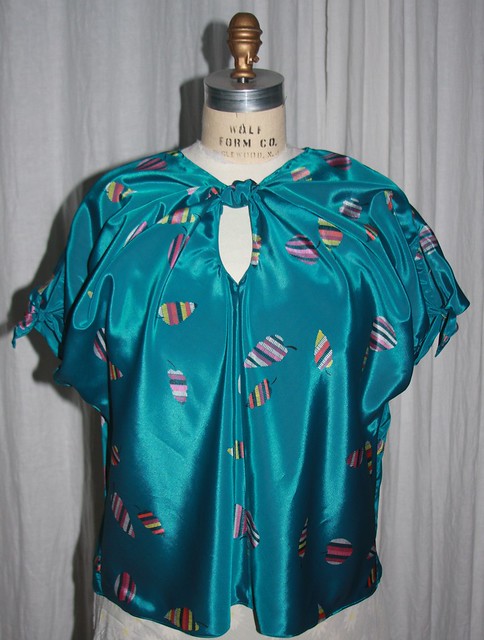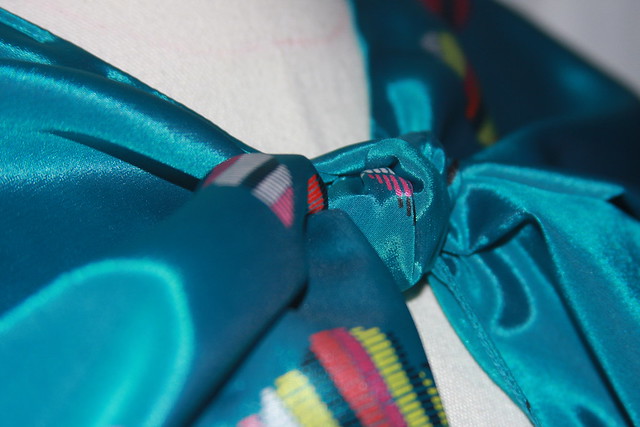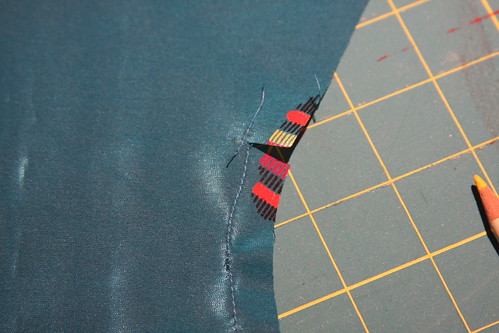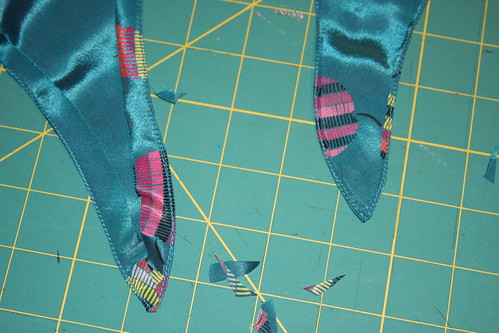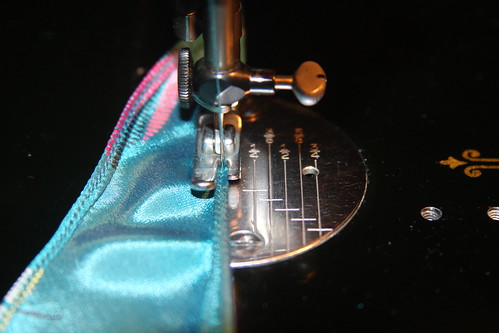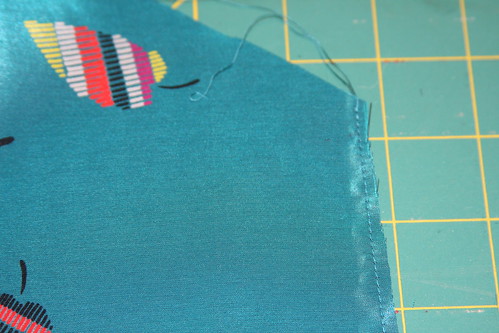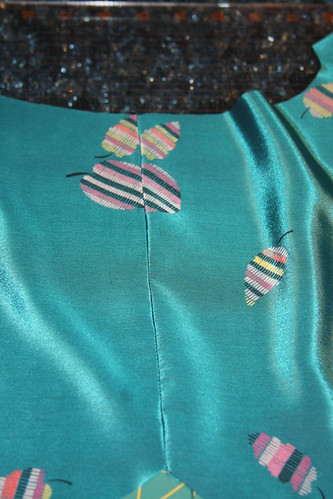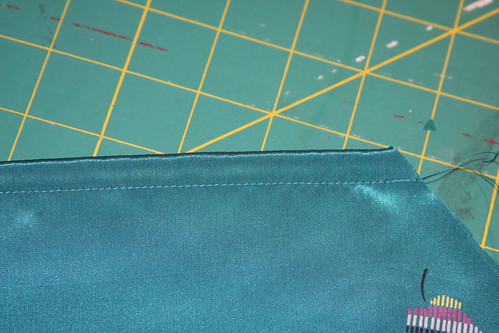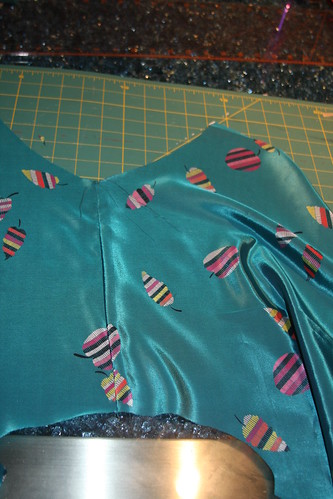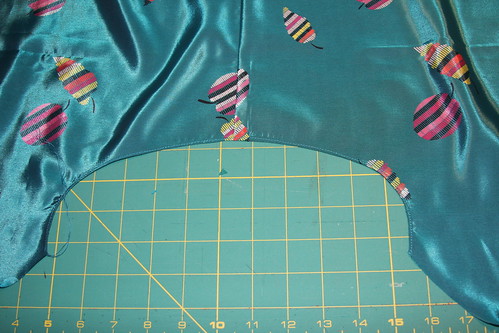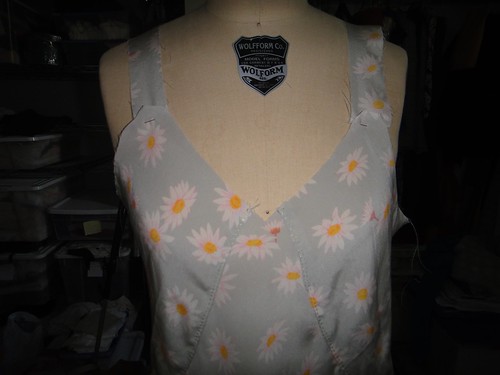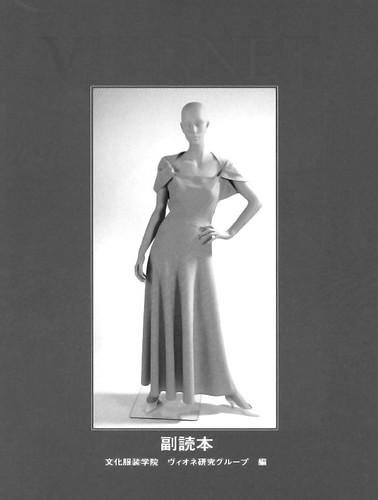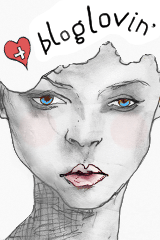The front of this shirt is cut on the bias and the back on the straight grain. You can see the bias creates lovely rolling folds at the knotted areas. The fabric is a polyester crepe de chine suitable for this design.
This pattern has a lot narrow hemming, "reinforce and clip" areas (8 in all), and french seams so if you need to practice these techniques it's the perfect pattern.
Here is the reinforced and clipped area and just beneath it, the first line of stitching for the narrow hemming.
2) fold fabric at stitch line (having stitch line at edge to stabilize), and turn and stitch.
Trim this area.
3) To complete the narrow hem, you still need to turn it and stitch one last time.
I can only tell you that without a straight stitch foot and feed dog plate with a small needle opening, this is difficult to do because the feed dogs on the zigzag feet and plate have a tendency to push down into the bobbin area, and don't feed the fabric evenly. I am using a Singer Featherweight but it's not the only one with this feature, so if you were ever wondering why you would use that tiny foot and plate this is it.
French seams
Here is the first pass of the french seam 1/8" on the edge with wrong sides together, so the right side has the seam allowances.
You then press open.
Those little double motifs will disappear soon.
You fold the pieces, now right sides together, encasing the seam allowance and run another row of stitching.
And that's it, a perfectly clean seam treatment, and that double motif is tucked in the seam.
The pattern gives detailed instructions at the beginning for the narrow hem, but doesn't reprint the instruction every time you run across it later in the pattern.
